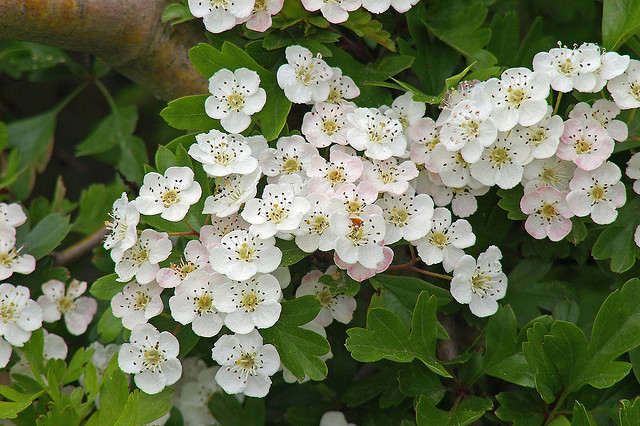How to lower your blood pressure without prescription drugs

It is no secret that chronic high blood pressure, whatever its particular root cause, can lead to heart disease, which is said to be the leading cause of death in America today. But what remains a secret, at least to many people, is how to deal with this condition naturally apart from pharmaceutical drug interventions, which the establishment often claims is the only effective remedy for lowering blood pressure. Here are four ways to help naturally lower your blood pressure without the need for prescription drugs:
1) Eat lots of garlic and onions, take garlic supplements. Writing for Mother Earth News in a 1997 review, Christopher Nyerges explains how eating lots of garlic and onions, two onion types from the medicinal Allium genus, can help thwart hypertension, lower circulating cholesterol, and prevent influenza and various other health conditions. Citing numerous scientific studies and a cohort of information he gathered from various medical journals and doctors, Nyerges highlights the ability of both garlic and onions to quell the arterial inflammation that often leads to high cholesterol, as well as prevent the sticking together of blood platelets following high-fat meals that may lead to clotting.
“Fresh garlic cells contain the amino acid alliin, considered to be the most active garlic constituent. When those cells are broken, as in crushing or mincing the cloves, alliin is converted to allicin by the enzyme allinase,” explains Robert E. Kowalski in his book The Blood Pressure Cure: 8 Weeks to Lower Blood Pressure without Prescription Drugs. “It appears that the allicin is effective in the treatment of hypertension by causing smooth muscle relaxation in arteries, as well as vasodilation, the widening of those arteries, allowing a freer flow of blood upon demand.”
2) Supplement with hawthorn herb. A member of the rose family, hawthorn (Crataegus species) has an extensive history of use as a natural medicine for the prevention and treatment of heart disease. Specifically as it relates to blood pressure, both the berries and leaves of the hawthorn plant help not only to protect blood vessels from hardening, but also to dilate blood vessels and improve blood flow. (http://www.umm.edu/altmed/articles/hawthorn-000256.htm)
“Hawthorn is a heart tonic — period. First of all, it is a mild coronary vasodilator, increasing the blood supply to the heart muscles and lessening the potential for spasms, angina, and shortness of breath in middle-aged or older individuals,” explains herbalist Michael Moore in his comprehensive book Medicinal Plants of the Pacific West.
“I have seen it help the middle-aged mesomorph, with moderate essential hypertension, whose pulse and pressure are slow to return to normal after moderate exertion and whose long, tiring days leave the pulse rapid in the evening. It will gradually help to lower the diastolic pressure and quiet the pulse … The benefits take weeks or even months to be felt, but are well maintained, not temporary.”
3) Replace the grains in your diet with root vegetables. It is a popular misconception that grains play little or no role in the development of hypertension — some doctors, in fact, actually recommend grains to their patients. But science pretty clearly illustrates that high-grain diets, especially those that are also “low fat,” are a direct cause of insulin resistance, which is characteristic of out-of-control blood sugar levels. Cutting out the grains, including even whole grains, and replacing them with root vegetables like sweet potatoes, carrots, and beets could help drastically lower your blood pressure.
Root vegetables are typically rich in potassium, a mineral that has been shown in numerous scientific studies to help normalize blood pressure. In fact, one of the primary causes of high blood pressure is mineral deficiency, which can quite easily be rectified through dietary modifications that incorporate more mineral-rich foods like root vegetables. (http://www.naturalnews.com/027407_potassium_blood_pressure.html)
“Both epidemiologic and clinical studies have suggested that an increase in potassium intake may lower blood pressure,” wrote the authors of a 1991 study published in the Journal of Hypertension. ” n increase in potassium intake should be included in the recommendations for a non-pharmacological approach to the control of blood pressure in uncomplicated essential hypertension.” (http://www.ncbi.nlm.nih.gov/pubmed/1649867)
4) Cut out the refined sugar and take more magnesium. Refined sugar, and fructose in particular, is a killer when it comes to high blood pressure. Excess sugar consumption can lead to insulin resistance, which is directly linked to high blood pressure. Sugar also prevents magnesium from properly nourishing the cells, a process that is essential for the normal relaxation of blood vessels. Cutting out sugar and supplementing with high-quality, non-GMO magnesium citrate, for instance, can help restore your magnesium reserves and normalize your blood sugar levels, which in turn will help balance your blood pressure.
Sources for this article include:
http://www.motherearthnews.com
http://wholehealthsource.blogspot.com
NaturalNews
By Ethan A. Huff
Featured image: Hawthorn Blossom by D H Wright

Commenting rules and guidelines
We value the thoughts and opinions of our readers and welcome healthy discussions on our website. In order to maintain a respectful and positive community, we ask that all commenters follow these rules:
We reserve the right to remove any comments that violate these rules. By commenting on our website, you agree to abide by these guidelines. Thank you for helping to create a positive and welcoming environment for all.